Kona on the "Big Island"
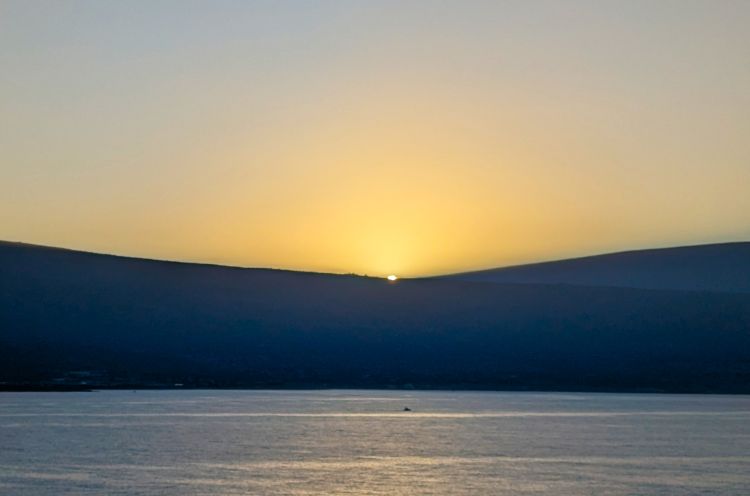
The sunrise over the Kona Coast.
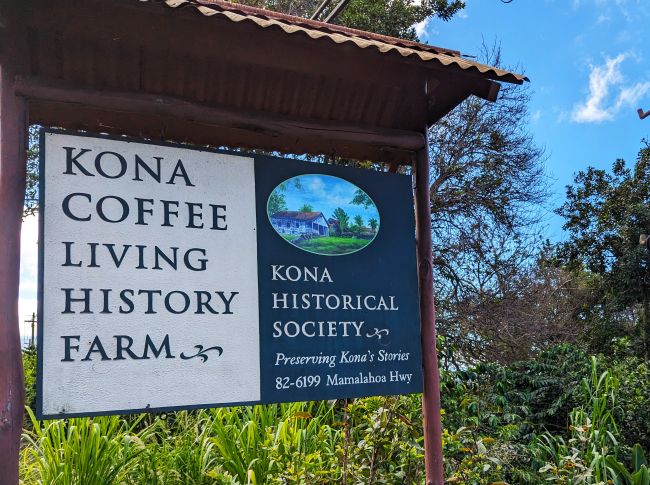
This area is well known for its coffee. In the early 1800s missionaries
brought in arabica coffee plants from Brazil and set up large
plantations, but soon realized that they would not have enough
labor to make it work. They brought whole Japanese families and
set them up as sharecroppers with a small 5-acre coffee farm,
a cistern, and a house with no electricity. We took a public bus
to this farm owned and operated by the Kona Historical Society
for a deep dive into this bit of Hawaiian history.
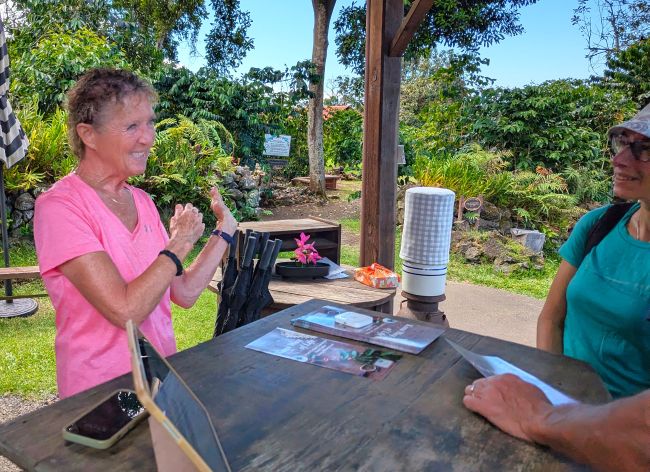
We paid the entrance fee here.
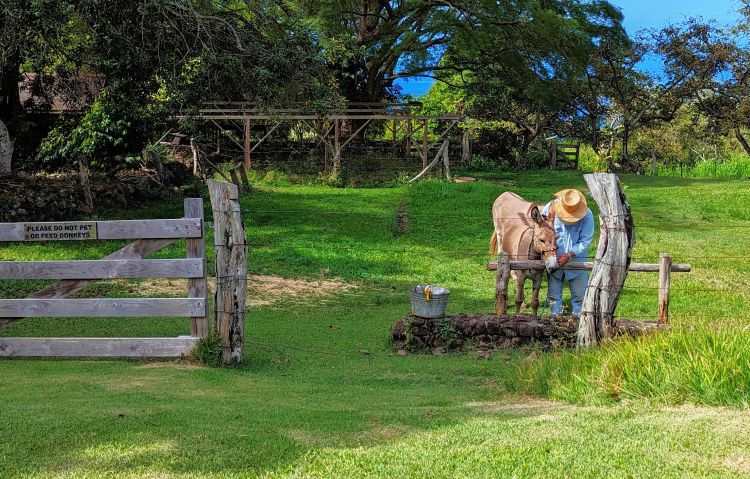
Donkeys were important work animals on these farms.
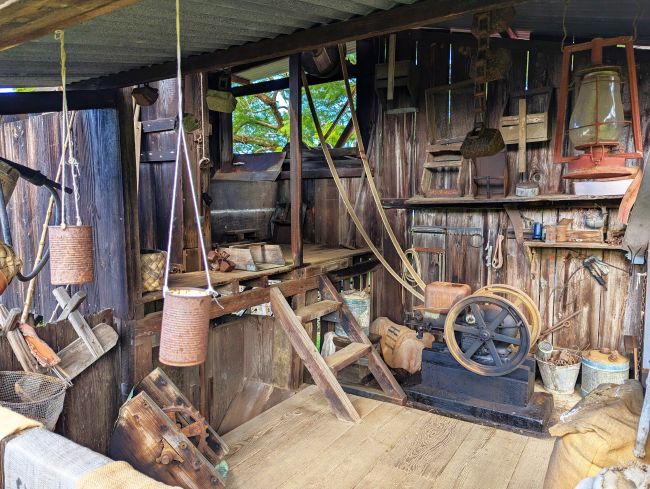
A work shed was filled with old tools and hand-run machinery.
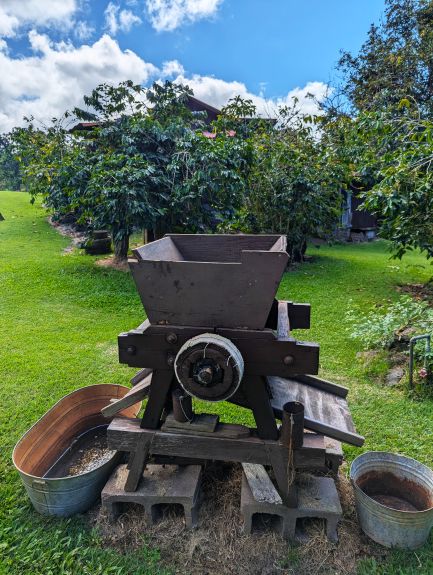 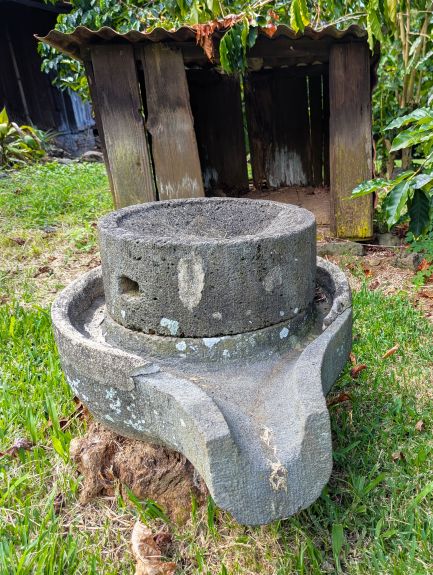
A coffee processor separated the fruit from the bean, if the family
wanted to drink their own coffee. A mill or press for some other
type of crop.

The farmhouse had a wood fire going. Also this huge cistern collected
water for the families to use. There was no running water for
them.
 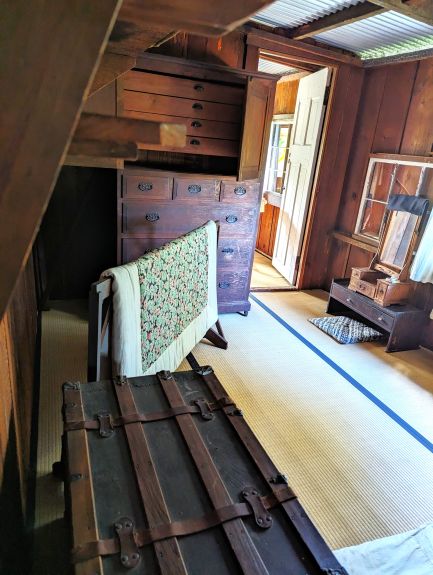
We were invited into the farmhouse. We left our shoes in the outer
room.
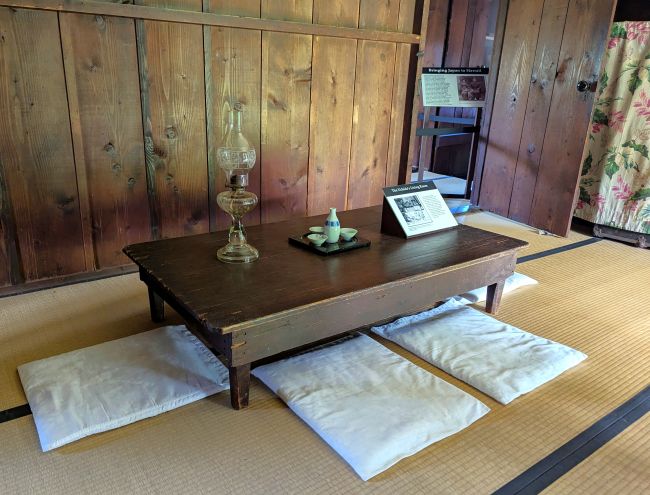
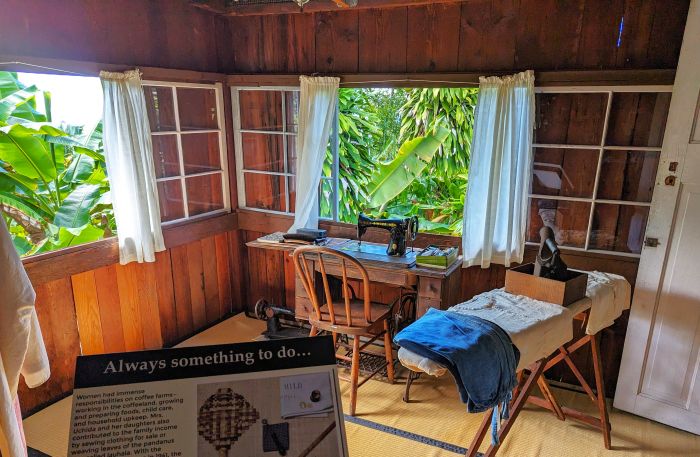
The sewing room and the dining room were open to the sea breeze.
 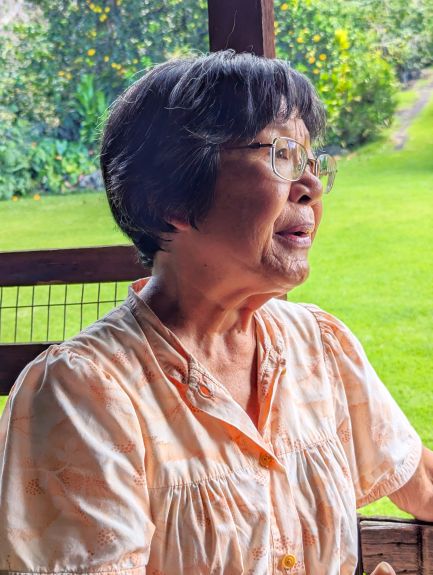
Our guide, Bernice, was a 3rd generation Japanese woman, who had
grown up in a house like this and she knew the people who lived
in this house. She offered an amazing look into this life.

She had set up everything to show how the woman of the house would
prepare lunches for the men and the children.
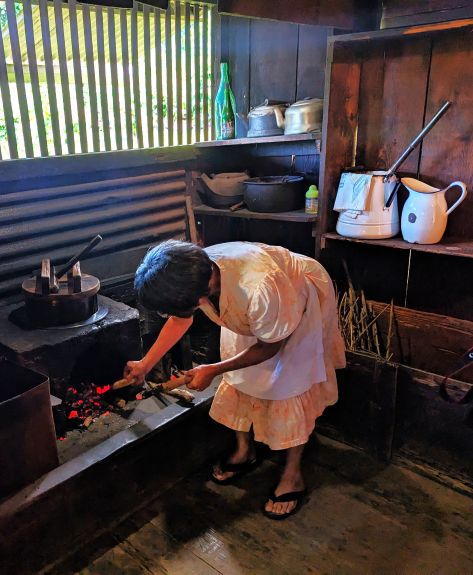 
She tended the open fire of coffee wood and showed how she'd made
a pot of rice and how a special handle allowed her to carry it
without potholders.
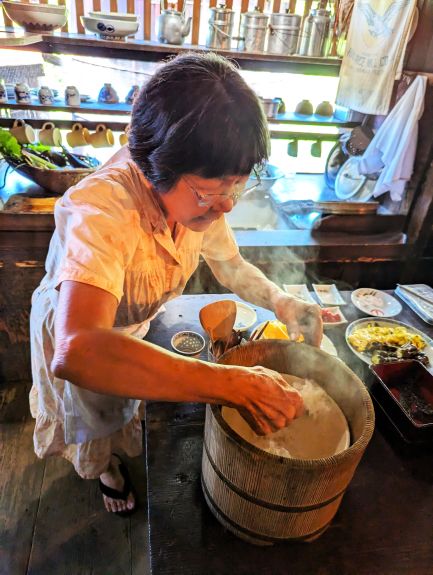 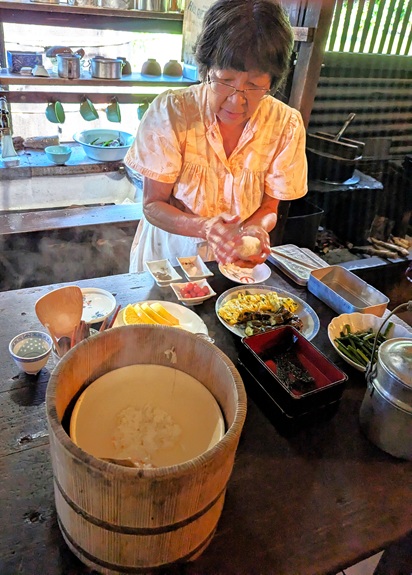
She showed how to make rice balls with a seaweed wrapper. The
men would get two, but the children would get one.

The lunches were packed in metal bento boxes. The oranges, other
fruit and crops were grown on each farm. They also kept chickens
for meat and eggs. This way families were able to sustain themselves.
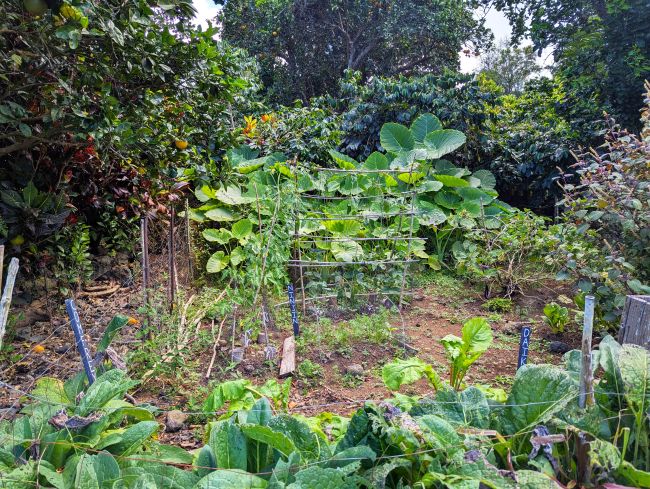
Some of the crops growing right outside the house.
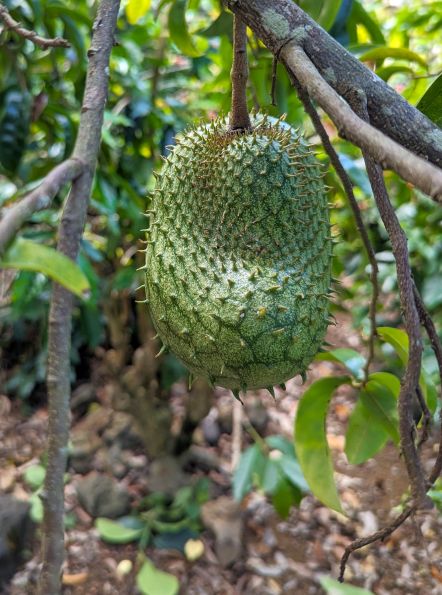 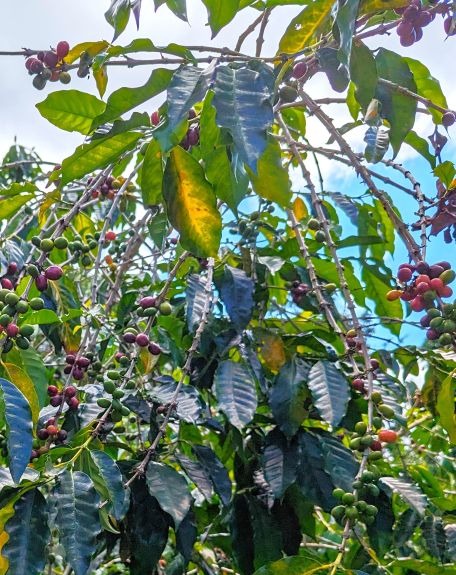
On the left a soursop, widely used tropical fruit for eating,
fruit salads and especially for juices or smoothies.
On the right is one of their coffee shrubs, which look like they
need to be harvested. The Historical Society is part of a coop
that uses a group that specializes in harvesting coffee. The green
coffee berries do not ripen after picking, so it takes a few trips
through the groves to harvest all the fruit.
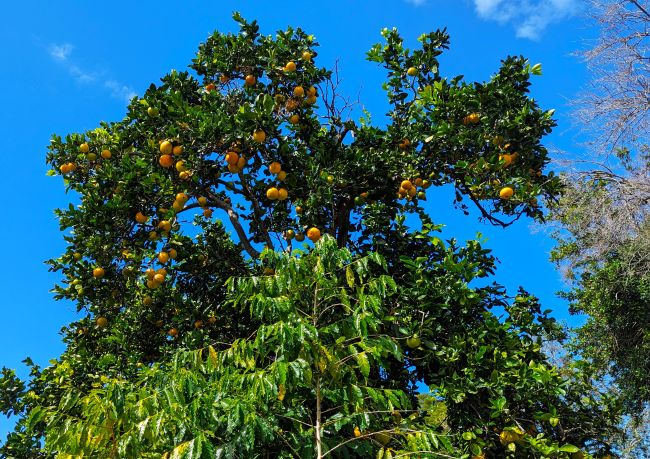
One of their orange trees towers over the carefully trimmed coffee
shrubs.
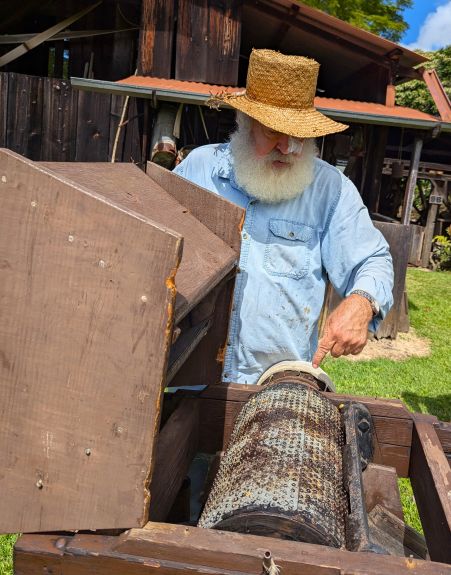 
Bernice's husband demonstrated how the hand powered machine separates
the coffee fruit from the beans.

We walked to this ethnobotanical garden from the coffee farm.
I talk about many of the plants grown here in my presentations.
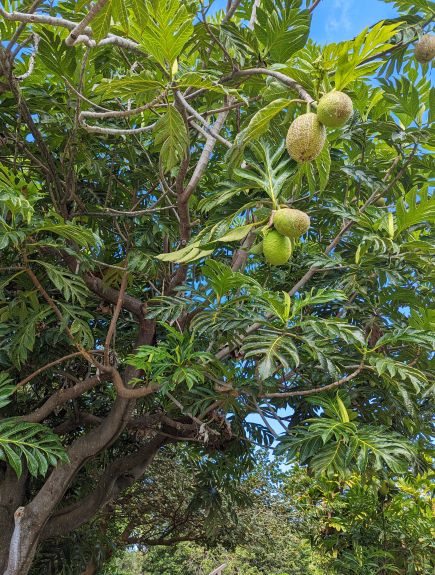 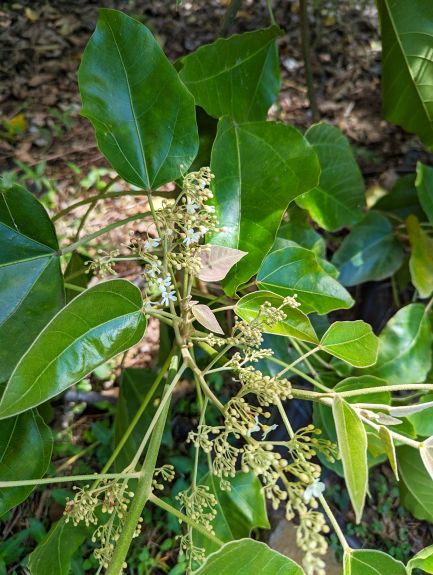
Breadfruit, on the left, was an important fruit and was a canoe
crop. The kukui was also a canoe crop and its oil is so dense
in the fruit that it can be burned like a candle.
 
The bitter melon (Momordica charantia) is native to Africa,
but was widely domesticated, especially in Asia even though it's
bitter. It is wickedly beautiful at this stage, though. We settled
in for some lunch and then went out to the street to wait for
a bus. It wasn't coming, so we hitchhiked back to the port.
|